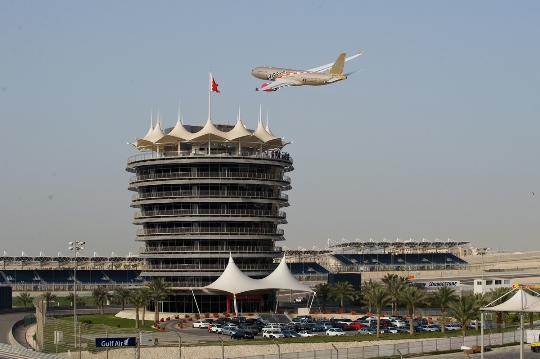Samer Majali's mission to revive Gulf Air's fortunes is starting to take shape. New regional routes are already underway to Iraq and the first regional jets have just been introduced.
It is a little over six months since former Royal Jordanian Airlines chief executive Majali took on the Gulf Air challenge. The long-established carrier has struggled over the last decade to adjust to the change in landscape as its formers owners Qatar, Abu Dhabi and, most recently, Oman pulled out of the airline, leaving Bahrain as its sole owner. Several management changes and business plans followed, but Gulf Air still found itself ending 2009 with an operating loss of around $500 million.
"The mandate is to make the airline commercially sustainable, but without the price tag [for the Bahrain government]," says Majali. Without action he estimates the carrier would have been looking at losses of BD1 billion ($2.6 billion) over the next five years. His answer is to refocus the carrier under a new strategy which envisages total losses of BD150 million over the next five years as it gradually reduces losses to hit profitability in 2012. This new strategy puts more emphasis on serving regional points in the Middle East, with the aim of improving its revenue mix and reducing dependence on transfer traffic. This accounts for about 80% of its business today.
Competitive Advantage
"Through the strategy we are serving secondary points that are not very well served out of the Middle East. We think we can get in there and get a competitive advantage," explains Majali. The key cities in the region will be served at least double-daily, itself creating a new market for daily business trips. The strategy is already evident in the rapid start of a batch of new routes into Iraq.
 |
|---|
| Gulf Air marked the recent Bahrain Grand Prix with a spectacular flypast immediately before the race start. More details here |
Majali has also moved fast, exploiting the opportunity to lease two Embraer 170 regional jets, originally bound for Nigerian Eagle Airlines. These are being taken on short-term lease while the carrier completes its aircraft evaluation. "We will go through a full tender and the permanent solution will take two years to get," he says. "This [lease deal] will allow us to have the benefits now, but also to test passenger reaction and for us to learn about it [revenue potential]. Here people expect a jet, the question is how small will they accept?" The airline envisages operating up to 10 regional jets by 2012 and will make a selection this summer with a view to taking the jets "as soon as we can get them in".
The shift in focus means some difficult decisions, especially for a carrier with Gulf Air's proud heritage - this year marks its 60th anniversary - and in a region where the neighbouring mega-Gulf carriers continue high-profile expansion. "Some people don't like us refocusing, cancelling routes. It has become the standard in the region that success is measured by continuous expansion and not closing down," says Majali. But he notes it does not make business sense to continue operating loss-making routes and adds it will still start more services than its cancels; adding around 20 new routes and cancelling 10 to 15.
Likewise, more modest widebody ambitions are in sharp contrast to some of its neighbours. "There is always a preoccupation with large airplanes," he says. "People love large aeroplanes. But they only make sense if you can fill them with good revenue. We don't start with the aeroplane and try to find a network. We have to have a different mindset. We are talking about getting the airline to the right size to serve this market."
Alliance Ambitions
Alliance membership is also in Gulf Air's sights, although nothing formal has begun. "We think our network and service levels, together with our plans to commercialise the airline, will be very attractive to the global alliances," Majali says. "We are exploring it and I'm sure the alliances are looking at us in the Gulf region. But there are no formal talks."
After several recent false dawns at the carrier, the end goal remains making Gulf Air commercially sustainable by 2012. "It is a huge loss we are trying to bleed down to zero," he says, but he believes the carrier's plan has enough flexibility to deal with any bumps along the way. "A good plan is one you can modify as you go along. You keep going with the general direction, but you might need to take a right or left turn or a detour."
Read our cover interview with Samer Majali when at Royal Jordanian here
Source: Airline Business























